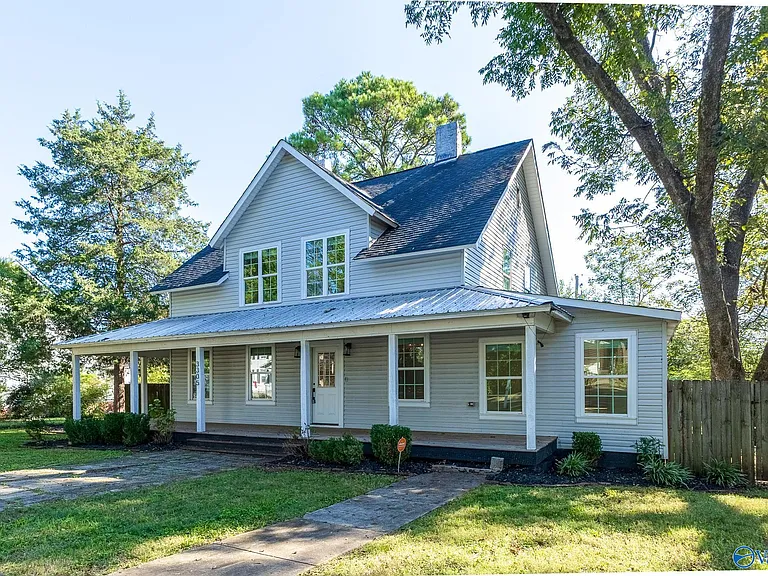Owner Financing: Definition, Example, Advantages, and Risks
What Is Owner Financing?
Owner financing (also called seller financing) is a real estate arrangement where the seller of the property acts as the lender for the buyer, instead of the buyer obtaining a mortgage from a bank or traditional mortgage lender. (Redfin)
In this model:
- The buyer pays a down payment to the seller.
- The seller retains either the deed or a lien until payments are completed (depending on the structuring).
- The buyer makes regular payments (principal + interest) directly to the seller, often under negotiated terms. (Nasdaq)
- Sometimes there is a balloon payment at the end of a short term (e.g. 5 or 10 years) for the remaining balance. (Nasdaq)
Because it bypasses the traditional mortgage underwriting process, it offers flexibility but also carries particular risks for both parties.
How Owner Financing Works: An Example
Here’s a simplified, illustrative scenario to make the concept concrete:
- A seller agrees to sell their home for €200,000.
- The buyer gives a down payment of €40,000.
- The seller finances the remaining €160,000 at an interest rate of 6 % for a 5‑year term, amortized over 25 years.
- The monthly payment might be calculated as if it were amortizing over 25 years, but at the end of 5 years the remaining balance (balloon) must be paid or refinanced. (Nasdaq)
- If the buyer has paid €800 per month for 60 months, they will owe a substantial final lump sum (balloon) unless the loan is refinanced. (Nasdaq)
- Until then, the seller may hold the legal title or a mortgage/lien against the property. (Nasdaq)
This structure gives both parties a path: the buyer gets into homeownership without a bank, and the seller becomes a lender with interest income.
Advantages of Owner Financing
Below are the main upsides for both buyers and sellers:
For Buyers
- Easier qualification
Buyers who don’t meet strict credit, income or document requirements of banks may still qualify under seller-financing terms. (Redfin) - Greater flexibility of terms
Down payment, interest rate, repayment schedule and other terms can be negotiated directly between buyer and seller. (HAR) - Faster closing / lower closing costs
Without a bank’s underwriting, the process can move more quickly, and you may avoid some bank fees, appraisal costs, loan origination charges, etc. (MasterClass) - Access to non‑conforming properties
Some properties do not meet bank lending criteria (due to condition, repairs, or age). Owner financing can make these purchases feasible. (Nasdaq)
For Sellers
- Larger pool of potential buyers
By offering financing, sellers attract buyers who otherwise couldn’t get a conventional mortgage. (Rocket Money) - Potentially higher selling price / better returns
The flexibility and appeal may allow sellers to negotiate a higher price and collect interest income. (More Loan) - Steady income / cash flow
Rather than a lump sum, the seller receives monthly payments with interest over time. (More Loan) - Sell “as-is” / fewer repair demands
Without needing to satisfy a lender’s inspection or repair mandates, sellers may sell without making costly upgrades. (HAR) - Tax / investment planning flexibility
Sellers may also defer capital gains by spreading payments over years. This can help in managing tax liabilities. (Reddit)
Risks & Challenges of Owner Financing
While attractive, owner financing has significant risks. It is crucial for both buyers and sellers to enter with eyes open.
For Buyers
| Risk | Explanation |
|---|---|
| Higher interest rates / cost | Because the seller takes on more risk, they may charge a higher interest than a bank would. (Tom’s Review Box) |
| Balloon payments / refinancing risk | Many deals include a balloon at the end of a short term. If the buyer can’t refinance or pay it, they may lose the property. (Nasdaq) |
| Limited legal protections / regulation | Seller-financed deals may not be subject to the same consumer protections and oversight as bank mortgages. (The Palms Realty) |
| Seller’s financial problems | If the seller still has a mortgage or liens, or their lender enforces a due-on-sale clause, it could jeopardize the buyer’s title. (Nasdaq) |
| Lack of credit reporting | Unless the seller reports payments, the buyer’s on‑time payments may not build credit. (The Palms Realty) |
| Potential property condition issues | Sellers may avoid making repairs; without rigorous inspection, buyers could inherit expensive issues. (The Palms Realty) |
For Sellers
| Risk | Explanation |
|---|---|
| Buyer default / non‑payment | If payments stop, the seller may need to foreclose—costly and time‑consuming. (Tom’s Review Box) |
| Carrying risk / delayed full payment | The seller waits for full payment over years rather than obtaining the full sale proceeds upfront. (Rocket Money) |
| Maintenance, taxes, liabilities | If the agreement isn’t clear, the seller may still be responsible for property taxes, insurance, or legal claims until title passes. (HAR) |
| Legal / regulatory complexity | Laws differ by jurisdiction. Sellers must ensure compliance and sometimes be licensed if offering financing. (The Palms Realty) |
| Market depreciation / lost opportunity cost | If property value falls, seller could be stuck with inflated terms. Also, tying up capital long term might prevent other investments. (fitzgeraldadvisors.com) |
Best Practices & Tips
To maximize benefits and reduce risks, both parties should follow these guidelines:
- Work with a real estate attorney
Proper documentation (promissory notes, trust deeds, titles) and compliance with local laws are essential. (Tom’s Review Box) - Run due diligence
- Buyer should verify the seller’s title, confirm no liens or mortgages that can cause foreclosure issues.
- Seller should screen buyer’s credit, income, and ability to meet terms.
- Negotiate clear, fair terms
Define down payment, interest rate, amortization, balloon payment, default remedies, responsibilities (taxes, insurance, maintenance). - Avoid overly aggressive balloon timing
If balloon is too soon, buyer may struggle to refinance—create reasonable timelines. - Include protections for seller
Consider requiring adequate down payment, late fees, escrow for taxes/insurance, a security interest. - Title and ownership structure
Decide whether seller retains title until full payment or transfers title subject to seller’s lien or mortgage. - Plan exit strategies
For seller: ability to sell the promissory note later or foreclose. For buyer: plan for refinancing or payoff. - Check local / regional rules
Real estate financing laws vary by region—ensure your agreement is permissible under local statutes.
Summary
Owner financing is a creative alternative to traditional mortgages. It gives buyers more flexible access to homeownership (especially for those who struggle to qualify for bank loans) and offers sellers the opportunity to generate ongoing income, attract more buyers, and possibly command better terms. But it also carries significant risks—higher costs, balloon payments, default exposure, legal complexity, title hazards.
If you’re considering offering or accepting owner financing in your area (for example, through HousesForSaleNearMe.net), always seek expert legal and real estate guidance. Tailor the terms carefully, document everything, and make sure all parties understand their rights and obligations.
Frequently Asked Questions (FAQs)
1. Is owner financing legal in all U.S. states?
Yes, owner financing is legal in all states, but the rules, disclosures, and documentation requirements vary. Some states have stricter consumer protection laws, especially regarding interest rates, disclosures, and foreclosure rights. Always consult a real estate attorney licensed in your state.
2. Do I need good credit to qualify for owner financing?
Not necessarily. One of the key benefits of owner financing is flexibility in qualifying criteria. While some sellers may still check credit or income, others may focus more on the down payment and your ability to pay.
3. Is a down payment required in owner financing?
Yes, typically. Most seller-financed deals include a 10%–30% down payment, though the exact amount is negotiable between buyer and seller.
4. What happens if the buyer defaults on owner financing?
If the buyer defaults, the seller may begin foreclosure proceedings or pursue legal action depending on the agreement and state law. The seller may regain ownership and retain prior payments, depending on contract terms.
5. Does owner financing appear on my credit report?
Generally, no, unless the seller reports to credit bureaus, which most private individuals don’t. However, buyers can request this, or use alternative reporting services.
6. Can a seller with an existing mortgage offer owner financing?
It’s possible, but complicated. If there’s a “due-on-sale” clause in the mortgage, selling the property (even with owner financing) can trigger the lender to demand full repayment. This must be disclosed, and legal advice is crucial.
7. What’s the typical term length in owner financing deals?
Most deals are short term (5–10 years), often with a balloon payment at the end. However, amortization can be structured over 15–30 years to keep payments low initially.
Owner Financing in Real Estate: Definition, Example, Pros, and Risks
Learn how owner financing works, with real-world examples, pros, cons, and legal tips. Discover if buying or selling with owner financing is right for you.
- owner financing
- seller financing
- owner financed homes
- real estate financing
- buy a home without a bank
- owner financing pros and cons
- owner financing example
- how does owner financing work





